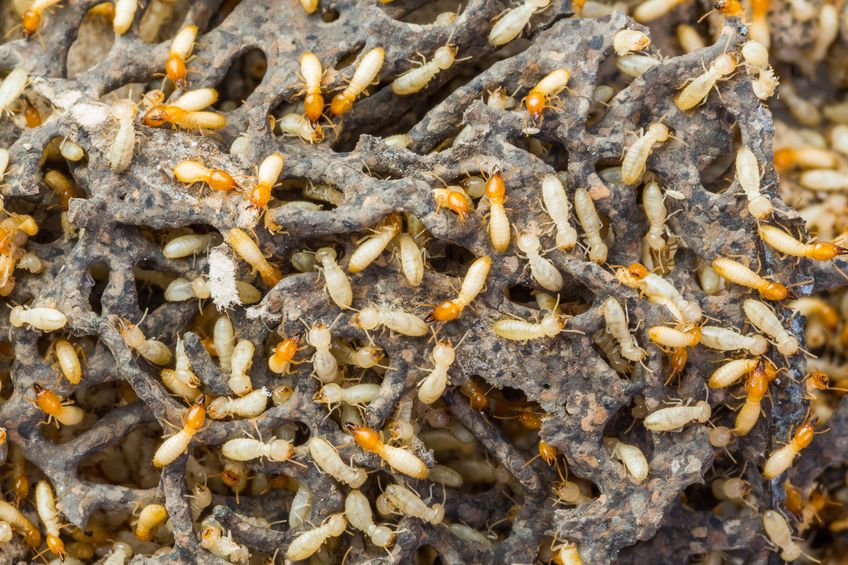Reticulitermes flavipes, or the “eastern subterranean termite,” is the most economically significant, widespread, and commonly controlled termite species in the United States, and it’s the only termite pest found in and around Boston. Subterranean termites are responsible for causing more than two billion dollars in structural damage in the US annually, and this figure does not include control costs or the cost of structural damage caused by drywood and dampwood termite species in the south.
Most homeowners in Boston begin to worry about termite pests when swarms of winged termites (alates) emerge within or near their home. The emergence of an indoor termite swarm indicates that a structural infestation has already been established, but luckily, termite swarms do not emerge within Boston-area homes often. However, termite swarms are spotted near Boston homes frequently during swarming season, which occurs from March to May in the northeast.
Since reproductive alates emerge only from mature colonies, and are not able to travel far before dying, spotting a swarm near a home only means that a colony must be located nearby. Although it is troubling to think that a subterranean termite colony may exist beneath residential turf-grass, it is important to note that all residential areas in Massachusetts are likely located above multiple subterranean termite nests.
During the termite swarming season, a very small minority of alates survive to mate and establish new colony nesting sites within moist soil. For the first few years following the establishment of a new colony, very few individual termites are produced within the nest, but hundreds of thousands of individuals exist within mature colonies that have aged for at least five years.
Colonies more than a decade old are often composed of many satellite nests that surround the original parent nest. Interconnected subterranean termite nests can span an area of land well over an acre in size, and it can be safely assumed that many, or most, Boston homes are located above these sizable networks of subterranean termite nests. This does not mean that all homes in Boston are in imminent danger of sustaining termite damage, as foraging workers will ignore above ground structural wood in homes as long as food remains plentiful in the soil. Also, termiticide barriers currently protect numerous Boston homes from termite attacks.
Have you ever found dead trees, stumps or loose branches on your lawn that had sustained what appeared to be damage from subterranean termites?

